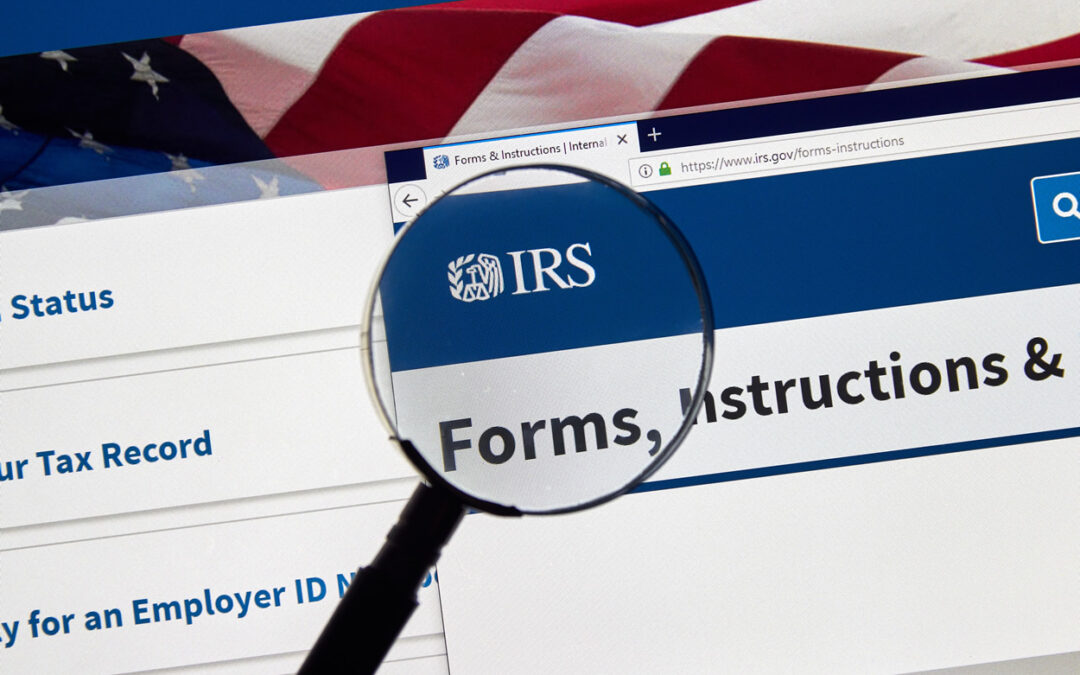
by sreamercpa | Mar 29, 2023 | accounting-tax, IRS, maryland-taxes, reisterstown-md-cpa, tax-planning
Dirty Dozen: Taking tax advice on social media can be bad news for taxpayers; schemes circulating involving tax forms
WASHINGTON – The Internal Revenue Service today continued the Dirty Dozen series with a warning on day seven about trusting tax advice on social media that can lure otherwise honest taxpayers and tax professionals into compromising tax situations.
Social media can circulate inaccurate or misleading tax information, and the IRS has recently seen several examples. These can involve common tax documents like Form W-2 or more obscure ones, like Form 8944 that’s aimed at a very limited, specialized group. Both schemes encourage people to submit false, inaccurate information in hopes of getting a refund.
“There are many ways to get good tax information, including from a trusted tax professional, tax software and IRS.gov. But people should be incredibly wary about following advice being shared on social media,” said IRS Commissioner Danny Werfel. “The IRS continues to see a lot of inaccurate information that could get well-meaning taxpayers in trouble. People should remember that there is no secret way to fill out a form and simply get a larger refund that they aren’t entitled to. Remember, if it sounds too good to be true, it probably is.”
Fraudulent form filing and bad advice on social media are part of the 2023 IRS annual Dirty Dozen campaign – a list of 12 scams and schemes that put taxpayers and the tax professional community at risk of losing money, personal information, data and more.
Working together as the Security Summit, the IRS, state tax agencies and the nation’s tax industry have taken numerous steps since 2015 to warn people about common scams and schemes during tax season and beyond, including identity theft schemes. The Security Summit initiative is committed to protecting taxpayers, businesses and the tax system against fraud and identity theft.
Some items on this year’s Dirty Dozen list are new, while others are re-emerging. While the Dirty Dozen is not a legal document or a formal listing of agency enforcement priorities, it is intended to alert taxpayers and the tax professional community about various scams and schemes.
Trending on social media: Fraudulent form filing and bad advice
Social media can connect people and information from all over the world. Unfortunately, sometimes people provide bad advice that can lure good taxpayers into trouble. The IRS warns taxpayers to be wary of trusting internet advice, whether it’s a fraudulent tactic promoted by scammers or it’s patently false tax-related scheme trending across popular social media platforms.
The IRS is aware of various filing season hashtags and social media topics leading to inaccurate and potentially fraudulent information. The central theme involves people trying to use legitimate tax forms for the wrong reason. Here are just two of the recent schemes circulating online:
Form 8944 fraud
A recent example of bad advice circulating on social media that could lead to fraudulent form filing involves Form 8944, Preparer e-File Hardship Waiver Request. There are wildly inaccurate suggestions being made about this form. Posts claim that Form 8944 can be used by taxpayers to receive a refund from the IRS, even if the taxpayer has a balance due. This is false information. Form 8944 is for tax professional use only.
While Form 8944 is a legitimate IRS tax form, it’s intended for a targeted group of tax return preparers who are requesting a waiver so they can file tax returns on paper instead of electronically. It is not in any way a form the average taxpayer can use to avoid tax bills. Taxpayers who intentionally file forms with false or fraudulent information can face serious consequences, including potentially civil and criminal penalties.
Form W-2 fraud
This scheme, which is circulating on social media, encourages people to use tax software to manually fill out Form W-2, Wage and Tax Statement, and include false income information. In this W-2 scheme, scam artists suggest people make up large income and withholding figures as well as the employer its coming from. Scam artists then instruct people to file the bogus tax return electronically in hopes of getting a substantial refund.
The IRS, along with the Security Summit partners in the tax industry and the states, are actively watching for this scheme. In addition, the IRS works with payroll companies and large employers – as well as the Social Security Administration – to verify W-2 information.
The IRS and Summit partners warn people not to fall for this scam. Taxpayers who knowingly file fraudulent tax returns potentially face significant civil and criminal penalties.
How taxpayers can verify information
Keep in mind: If something sounds too good to be true, it probably is.
- gov has a forms repository with legitimate and detailed instructions for taxpayers on how to fill out the forms properly.
- Use IRS.gov, official IRS social media accounts, or other government sites to fact check information.
Make a difference: Report fraud, scams and schemes
As part of the Dirty Dozen awareness effort, the IRS encourages people to report individuals who promote improper and abusive tax schemes as well as tax return preparers who deliberately prepare improper returns.
To report an abusive tax scheme or a tax return preparer, people should mail or fax a completed Form 14242, Report Suspected Abusive Tax Promotions or Preparers and any supporting materials to the IRS Lead Development Center in the Office of Promoter Investigations.
Mail:
Internal Revenue Service Lead Development Center
Stop MS5040
24000 Avila Road Laguna Niguel, CA 92677-3405
Fax: 877-477-9135
Alternatively, taxpayers and tax practitioners may send the information to the IRS Whistleblower Office for possible monetary reward.
For more information, see Abusive Tax Schemes and Abusive Tax Return Preparers

by sreamercpa | Jan 24, 2023 | IRS, maryland-taxes, reisterstown-md-cpa
Most of the common errors taxpayers make on their tax returns are easily avoidable. By carefully reviewing their return, taxpayers can save time and effort by not having to correct it later. Filing electronically also helps prevent mistakes. Tax software does the math, flags common errors and prompts taxpayers for missing information. It can also help taxpayers claim valuable credits and deductions. Taxpayers who qualify may use IRS Free File to file their return electronically for free.
Here are some of the mistakes to avoid:
- Filing too early. While taxpayers should not file late, they also should not file prematurely. They should wait to file until they’re certain they’ve received all their tax reporting documents, or they risk making a mistake that may lead to a processing delay.
- Missing or inaccurate Social Security numbers. Each SSN on a tax return should appear exactly as printed on the Social Security card.
- Misspelled names. The names of all taxpayers and dependents listed on the return should match the names on their Social Security cards.
- Inaccurate information. Taxpayers should carefully enter any wages, dividends, bank interest and other income they received to make sure they report the correct amounts. This includes any information taxpayers need to calculate credits and deductions.
- Incorrect filing status. Some taxpayers choose the wrong filing status. Publication 501 has detailed information about filing statuses.
- Math mistakes. Math errors are some of the most common mistakes. They range from simple addition and subtraction to more complex calculations. Taxpayers should always double check their math. Better yet, tax prep software will check it automatically.
- Figuring credits or deductions. Taxpayers can make mistakes figuring things like their earned income tax credit, child and dependent care credit and child tax credit. Tax software will calculate these credits and deductions and include any required forms and schedules.
- Incorrect bank account numbers. Taxpayers who are due a refund should choose direct deposit. This is the fastest way for them to get their money. However, taxpayers need to make sure they use the correct routing and account numbers on their tax return.
- Unsigned forms. An unsigned tax return isn’t valid. In most cases, both spouses must sign a joint return. Exceptions may apply for members of the armed forces or other taxpayers who have a valid power of attorney.
- Disreputable tax preparers. Taxpayers should remember they, not the tax preparer, are responsible for the information on their tax return. The IRS has resources to help taxpayers find someone to prepare their tax return. Some taxpayers may even be able to get free help from IRS-certified volunteers. Certified public accountants, enrolled agents or other tax professionals can also help taxpayers avoid errors.

by sreamercpa | Jan 24, 2023 | IRS, reisterstown-md-cpa
WASHINGTON –The Internal Revenue Service today reminded taxpayers to choose a tax return preparer with care. Even though most tax return preparers provide honest, quality service, some may cause harm through fraud, identity theft and other scams.
When hiring an individual or firm to prepare a tax return, filers need to understand who they’re choosing and what important questions to ask.
A taxpayer’s needs will determine which kind of preparer is best for them. Whether taxpayers regularly use a tax professional to help them file a tax return or have decided to work with one for the first time, choosing a tax professional carefully is important. Taxpayers are ultimately responsible for all the information on their income tax return, regardless of who prepares the return.
When choosing a tax professional, the IRS urges taxpayers to visit IRS.gov. The Choosing a Tax Professional page on IRS.gov has information about tax return preparer credentials and qualifications. The IRS Directory of Federal Tax Return Preparers with Credentials and Select Qualifications can help identify many preparers by type of credential or qualification.
Warning signs
By law, anyone who is paid to prepare or assists in preparing federal tax returns must have a valid Preparer Tax Identification Number. Paid preparers must sign and include their PTIN on any tax return they prepare.
Not signing a return is a red flag that the paid preparer may be looking to make a quick profit by promising a big refund or charging fees based on the size of the refund. Taxpayers should avoid these unethical “ghost” tax return preparers.
A ghost preparer is someone who doesn’t sign tax returns they prepare. Unscrupulous ghost preparers often print the return and have the taxpayer sign and mail it to the IRS. For electronically filed returns, a ghost preparer will prepare the tax return but refuse to digitally sign it as the paid preparer.
Tips for selecting a tax return preparer
Here are a few tips to consider when choosing a tax return preparer:
- Look for a preparer who’s available year-round. If questions come up about a tax return, taxpayers may need to contact the preparer after the filing season is over.
- Review the preparer’s history. Check the Better Business Bureau website for information about the preparer. Look for disciplinary actions and the license status for credentialed preparers. For CPAs, check the State Board of Accountancy’s website, and for attorneys check with the State Bar Association. For enrolled agents go to IRS.gov and search for “verify enrolled agent status” or check the IRS Directory of Federal Tax Return Preparers.
- Ask about service fees. Taxpayers should avoid tax return preparers who base their fees on a percentage of the refund or who offer to deposit all or part of the refund into their own financial accounts. Be wary of tax return preparers who claim they can get larger refunds than their competitors.
- Ensure their preparer offers IRS e-file. The IRS issues most refunds in fewer than 21 days for taxpayers who file electronically and choose direct deposit.
- Provide records and receipts. Good preparers ask to see these documents. They’ll also ask questions to determine the client’s total income, deductions, tax credits and other items. Do not hire a preparer who e-files a tax return using a pay stub instead of a Form W-2. This is against IRS e-file rules.
- Understand the preparer’s credentials and qualifications. Attorneys, CPAs and enrolled agents can represent any client before the IRS in any situation. Annual Filing Season Program participants may represent taxpayers in limited situations if they prepared and signed the tax return.
- Never sign a blank or incomplete return. Taxpayers are responsible for filing a complete and correct tax return.
- Review the tax return before signing it. Be sure to ask questions if something is not clear or appears inaccurate. Any refund should go directly to the taxpayer – not into the preparer’s bank account. Review the routing and bank account number on the completed return and make sure it’s accurate.
Taxpayers can report preparer misconduct to the IRS using Form 14157, Complaint: Tax Return Preparer. If a taxpayer suspects a tax return preparer filed or changed their tax return without their consent, they should file Form 14157-A, Tax Return Preparer Fraud or Misconduct Affidavit.
More information:



